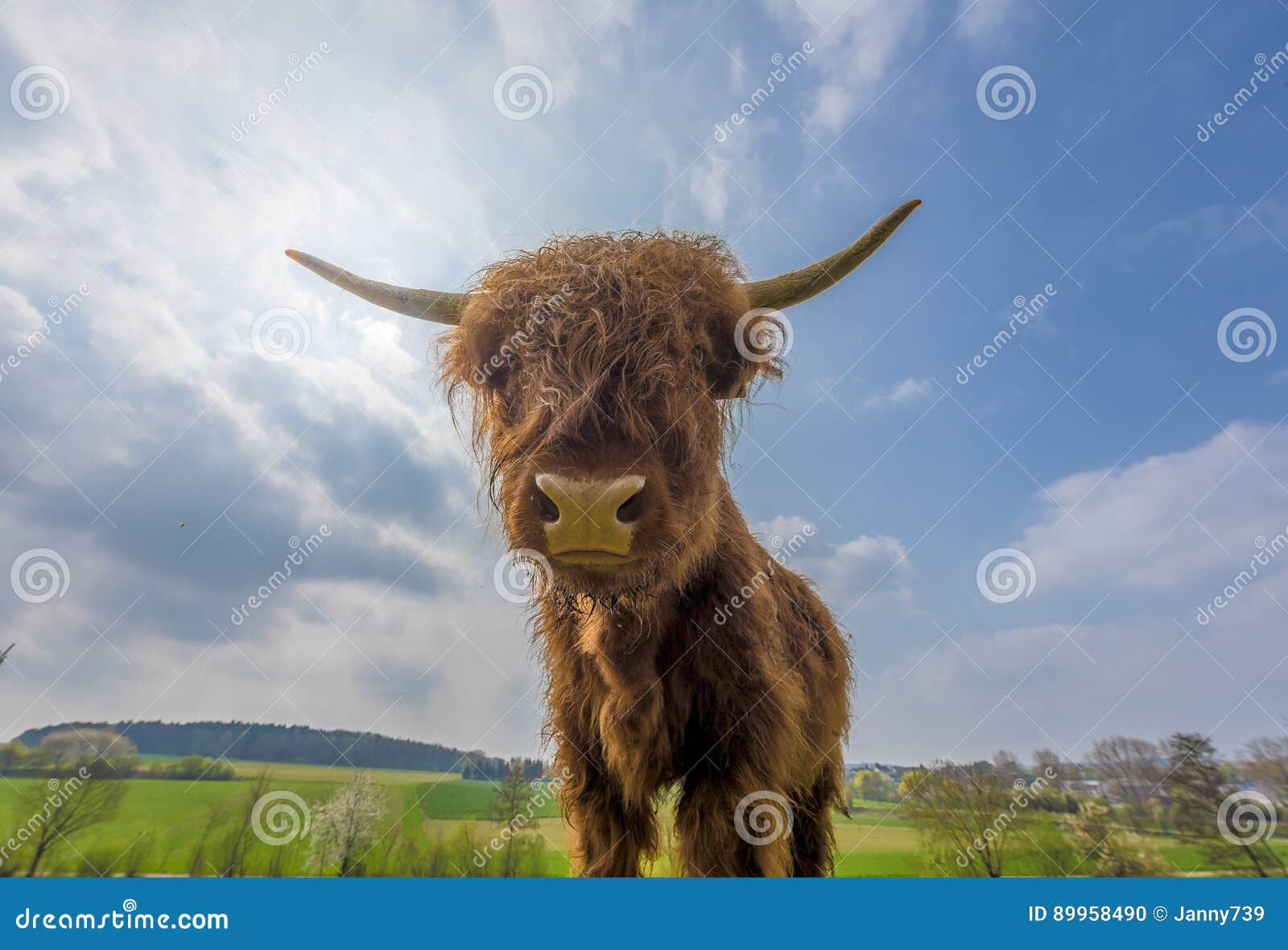
Highland cattle have a high level of resistance and a surprising ability to survive, sometimes in very difficult conditions. It’s amazing to see them born, standing and drinking all within half and hour usually. If you’re lucky you may witness a birth when you’re here. They calve alone with no help, generally giving birth to small calves, averaging 50-75 pounds, but they do grow very quickly once born. The entire group have been seen to surround the young when in protection mode. We make sure they calf close to the barn, but also I think mum’s horns would be protection too. We used to worry about predation from the cougar, bear, wolf and coyote in the area but we’ve never lost an animal.

Never approach a new calf when mum is there. With this good nature does come protectiveness. They are very curious and will often approach people to see who they are. Occasionally they will have a head to dead tussle to double check their order in the hierarchy, especially as they get bigger or if they’ve been separated for a while. Within their group they have a clear structure and hierarchy and never fight. They are known for being a very docile animal, never showing any aggression and are very low stress to keep and manage. They have a reputation for their fantastic temperament. Look at them! They’re gorgeous, but that’s not the only reason we keep them. They shed out their downy undercoat and the long hair gets shorter in Summer, especially in warmer climates – that’s why they are not as shaggy as they appear in Scotland. The meat of Highland cattle tends to be leaner than most beef because Highlands are largely insulated by their thick, shaggy hair rather than by subcutaneous fat. Their long hair is actually an unusual double coat of hair – a long oily outer coat, the longest of any cattle breed, covering a downy undercoat. Their distinctive long hair keeps them warm in winter, offers protection from the brush and undergrowth, protects their eyes from flies and it contributes to their stunning appearance which makes them so popular. The calves start growing horns pretty quickly and sometimes you see them rubbing their heads to ease the pressure as they push through. They know precisely where the tip of those horns are and they are used for scratching difficult to reach spots. A bull’s horns often grow forwards or even slightly downwards and have a much wider base, whereas a cow’s face upwards and are longer and finer at the tip. We have a few black and a rare silvery/grey dun colour in addition to red.īoth male and female have horns although if you look look they are slightly different shapes.

The majority are shades of red but they come in all colours from white through to black. You can’t fail to spot a Hielan Coo – shaggy coats and beautiful horns. Highland cattle were first imported into Canada in the 1880s to Manitoba and Nova Scotia. This had the added benefit of also keeping others from stealing them. In winter it wasn’t unusual for the cows to come into the croft and their body heat helped warm the croft. Many crofters owned a “house cow” that would provide milk for the family.


They are a hardy breed, designed to withstand the conditions in the Scottish Highlands: cold, wet and windy. Originating in the Highlands and the Outer Hebrides islands of Scotland, Highland Cattle have been living alongside man for thousands of years, with written record as far back as the year 1200-AD, and archeological finds that take them back to 1200-BC. Sometimes called fluffy cows, hairy coos or hielan coos (Scottish for Highland cows) So, it’s time for some Highland cattle information: their history, why we keep and love them and extreme cow watching at Home Lodge. , The favourite thing at Home Lodge is the Highland cattle – the hielan coos! Yes the breakfasts are great, the views are amazing, the beds are unbelievably comfortable, but the cows win every time! As October ends, the temperatures are falling, the cattle are delighted the heat of summer is over and their winter coats are growing.


 0 kommentar(er)
0 kommentar(er)
